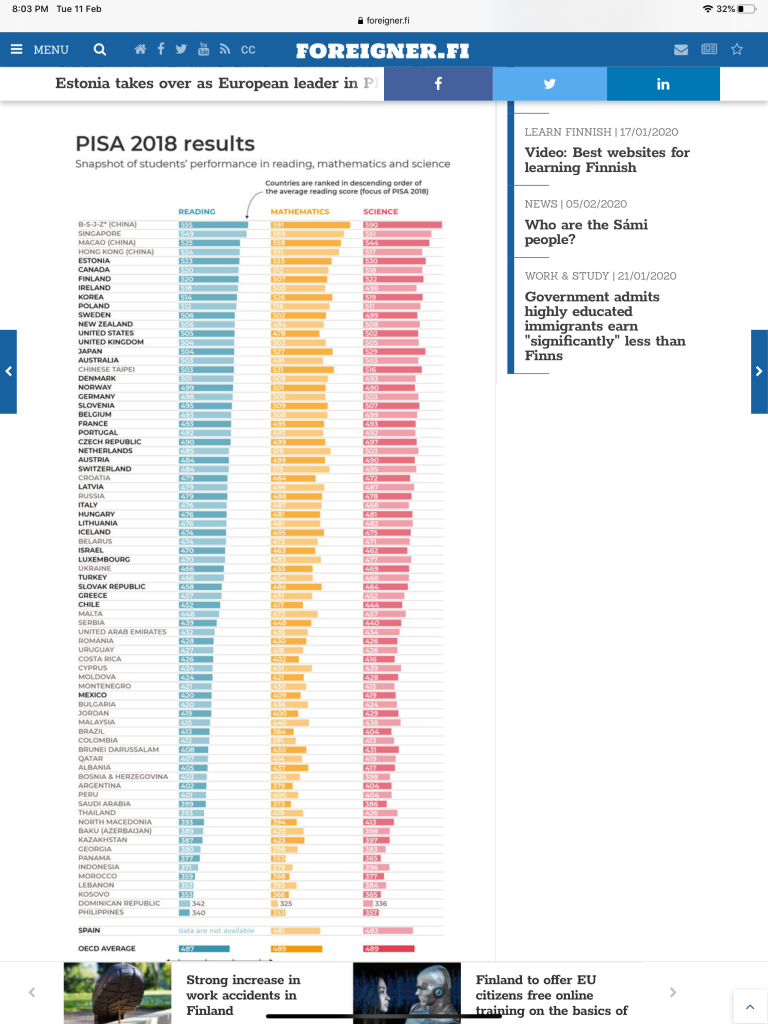
So, all over in Estonia, the atmosphere in the Education Sector is like using the PISA 2018 results to tell the whole world that it is Europe Number 1. I have a feeling that they are overdoing it. Looking back to the charts after so many headlines (everywhere), that Estonia’s Education Tops in Europe, and it can be very misleading too.
First of all, PISA is the Programme for International Student Assessment which is a worldwide study by the Organisation for Economic Co-operation and Development in member and non-member nations intended to evaluate educational systems by measuring 15-year-old school pupils’ scholastic performance on mathematics, science, and reading. The PISA-based Test for Schools provides school-level estimates of performance and information about the learning environment and students’ attitudes gathered from student questionnaires.
The results of PISA 2018 were presented on 3 December 2019, which included data for around 600,000 participating students in 79 countries and economies, with China’s economic area of Beijing, Shanghai, Jiangsu and Zhejiang emerging as the top performer in all categories. Even it is showing a biased sample of schools in favor of high-performing schools. I wonder how many people really know that in Pisa 2018, there was a big problem in England as around one in six (17 per cent) 15-year-olds across the UK within sampled schools who were meant to take part in Pisa were either absent or refused.
I looked back at the results again, actually being number 1 in Europe, it is still way behind Singapore, Hongkong and China. What I want to emphasize is: I want to think of education for the next generation to take into account the soft skills, emotional quotient, leadership skills, creativity, lateral thinking and development as of higher importance. I wonder is there a world chart that maps these aspects of our systems of education in the world?

